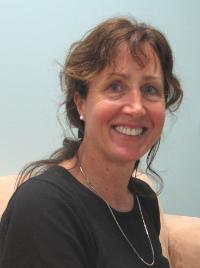Society's 'overbelly' part of a bigger picture!
Published on 10 December, 2009
It's useful to collect data about obesity and food choices but the Holy Grail of community well-being is to promote what it really means to be healthy and feel healthy...
That's according to CQUniversity health researcher and keen triathlete Susan Williams, who has come to the realisation that many people just don't realise what it feels like to feel good!

Susan Williams - providing some food for thought!
"They put unhealthy food in and they feel unhealthy but they don't make the connection because they think it's just normal to feel that way," she said.
Susan is a former nurse who now runs a private sports nutrition business. She says she has seen people who have a lot of issues around food.
She said society's obsessive fascination with dieting, exacerbated by the media and money-making industry surrounding the issue, has created problems such as yo-yo dieting.
"A lot of people set themselves up for failure," Susan said.
"Programs like the Biggest Loser are so unrealistic. People can't physically cope with the stress of exercising 5 hours a day unless they have an army of people monitoring them.
"Success or failure really comes back to little things. For example, I knew one overweight lady who hated walking hard because she didn't like sweating.
"People are forced to do things they don't feel comfortable with or able to do because they don't have the understanding about why they have developed certain behaviours.
"It's a real minefield and I don't think there's one solution. It has to be a whole, broader community effort where we can work together to create change and healthy behaviours where the focus is on health rather than weight.
"BMI is just an indicator! It's really about health and how we feel; not about the measure of weight.
"The other side of coin is the extremism of the people who don't eat; who think to be healthy you need to be thin and to be thin you need to not eat. There's also associations between being underweight and poor health, often involving drinking and cigarettes.
"Hence focusing on weight is not a good thing. It needs to be used as a measure but from a public communication perspective body weight should be downplayed and overall good health should be promoted more."
Susan said few people really think about what they are eating and how they feel.
"They don't have a perception about what is normal and what could be good. When we can change behaviours in a positive way people will have more awareness of how they should feel or what it is to feel good, to have energy and to not feel tired every day.
"There's a lot to be said for trying to promote the whole concept of health and what it really means to be healthy."
Susan has recently completed her PhD study on the relationship between adolescent BMI and family behaviours, followed by tailored school-based interventions, and she's about to embark on a similar study involving the nutrition of younger children (aged 4-5) and parental behaviours, using shopping dockets and food purchase diaries.
"We've found the family environment is the critical aspect to promoting the health of children.
"There's such strong connections between parental behaviour and child and adolescent behaviours that we have to think about the family environment as the centrepiece and if we look at health promotion in schools we have to ensure there is family inclusion, otherwise the kids are getting one message at school and maybe a conflicting message at home.
"This family inclusion aim is a big issue because every parent knows there's a lack of time to attend school functions. How do you get information from school to home? Eg. Newsletters get stuck in bags and it's not practical to send too much in mail. How can we bridge the divide between home and school so messages support each other and create line of communication so it works."

